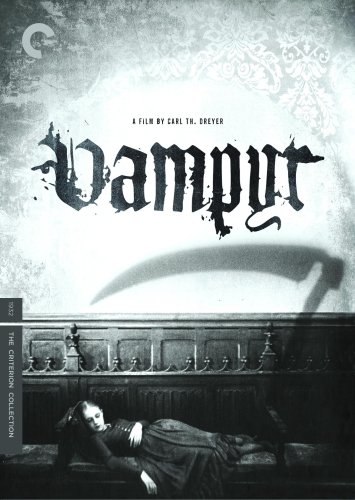All Nonfiction
- Bullying
- Books
- Academic
- Author Interviews
- Celebrity interviews
- College Articles
- College Essays
- Educator of the Year
- Heroes
- Interviews
- Memoir
- Personal Experience
- Sports
- Travel & Culture
All Opinions
- Bullying
- Current Events / Politics
- Discrimination
- Drugs / Alcohol / Smoking
- Entertainment / Celebrities
- Environment
- Love / Relationships
- Movies / Music / TV
- Pop Culture / Trends
- School / College
- Social Issues / Civics
- Spirituality / Religion
- Sports / Hobbies
All Hot Topics
- Bullying
- Community Service
- Environment
- Health
- Letters to the Editor
- Pride & Prejudice
- What Matters
- Back
Summer Guide
- Program Links
- Program Reviews
- Back
College Guide
- College Links
- College Reviews
- College Essays
- College Articles
- Back
Vampyr MAG
If anything can be said about Carl Theodor Dreyer's “Vampyr,” it's that the film is incredibly atmospheric, gothic, and hypnotically dream-like. Made in 1932, it borrows many techniques and elements from silent movies. The cinematography and dark mood resemble films like “Nosferatu” and “The Cabinet of Dr. Caligari,” but Dreyer adds elements of his own style which allows “Vampyr” to stand on its own as an enjoyable and mesmerizing gothic horror.
The film follows the quiet Allan Grey (Julian West), a scholar of the occult, as he checks into an eerie country inn. The night of his arrival, after finally getting to sleep, Grey is awakened suddenly by an old man who enters his room. The man leaves a package marked “To be opened upon my death.” Grey takes the package and ventures outside, and he's soon led by a band of shadows to a desolate castle and nearby manor. The rest of the film follows Grey's paranormal experiences with shadows, bizarre dreams, and mysterious vampires.
The visuals are, by far, the best aspect of this film. Using special blurring techniques and a slow-moving camera, the film feels like it's been ripped straight from a gothic horror novel. The imagery and mood are particularly effective; the film's dreamy haze creates an atmosphere that few have ever achieved. It feels and looks like a silent film, but the use of recorded voices, which sound like dreamy echoes, add to the eeriness.
This isn't necessarily a character piece, so characters don't mean much to the filmmaker. That said, the film has some interesting faces and Allan Grey's character bears a striking resemblance to H.P. Lovecraft – arguably one of the greatest horror writers ever. For Lovecraft fans, it's like watching one of his stories come to life.
Sadly, the film isn't without its faults. While “Vampyr” is fascinating and has an amazing sense of style, the narrative feels disjointed and confused. Sacrificing coherence for style isn't usually the best idea. In addition, the film becomes far more conventional halfway through. It's still gothic and stylish, but the morality becomes more black-and-white and the ending feels totally predictable.
“Vampyr” is very good but not necessarily great. It's not as revolutionary or marvelous as “Nosferatu,” but it'll still please fans of gothic horror.
Similar Articles
JOIN THE DISCUSSION
This article has 0 comments.

